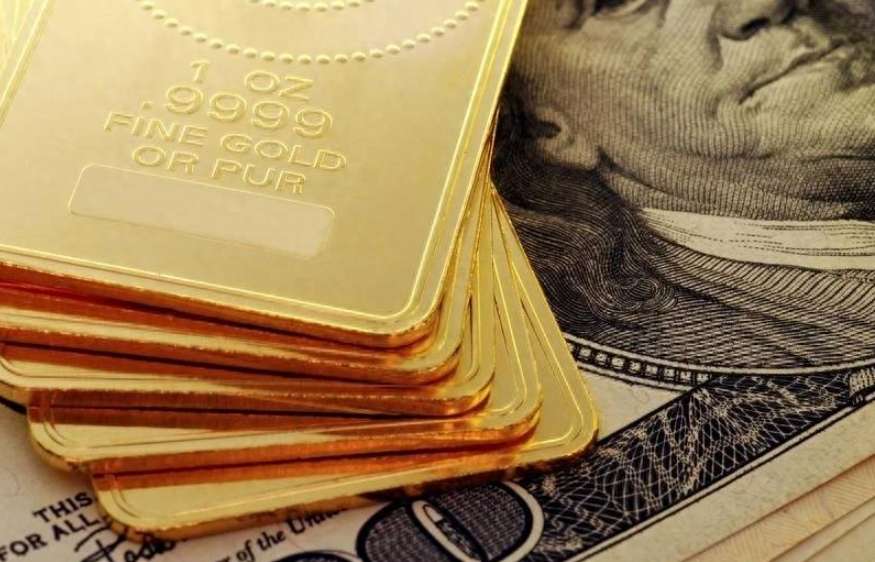Gold Standard Revival? America's Quiet Gold Surge
Advertisements
In a surprising twist in 2023,four U.S.congressmen put forth a bill aimed at reinstating the gold standard.While at first glance,the intentions of a handful of lawmakers might seem trivial—especially considering the obstacles such a bill would face in Congress—it’s vital to understand that such a proposal stems from deeper sentiments rooted in the fabric of American economic discourse.
The revival of the gold standard movement can be traced back to reactions against the financial crisis of 2008.This crisis revealed the insatiable greed on Wall Street,coupled with the Federal Reserve's bailouts and the Treasury's actions perceived favorably only by the affluent,igniting widespread anger among ordinary Americans suffering from the economic fallout.
The heart of this discontent manifested through movements like Occupy Wall Street,a protest against inequality and corporate influence that swept across the country.Although Occupy Wall Street may not have produced concrete results,it planted a seed of skepticism among the populace regarding the trustworthiness of paper currency and the Federal Reserve,ushering in discussions about the potential reclamation of monetary stability through gold.
By 2011,the state of Utah took a bold step forward by passing a monetary law that recognized both gold and silver coins issued by the U.S.Mint as legal tender.This legislation allowed Utahns to settle public and private debts with precious metals while exempting such transactions from state taxes—a significant legal breakthrough that paved the way for a resurgence of sound money principles.
The passage of Utah’s law led to the rapid emergence of a company called Goldback,which began issuing gold currency that could be used in everyday transactions.Goldback’s standard unit was designed as a thin,wallet-friendly note containing a specified amount of gold,challenging the conventional currency paradigm.
Specifically,the law formatted how various denominations of gold and silver would be treated under the state’s legal tender rules,effectively challenging the monopoly that fiat currency held over financial exchanges within Utah.Goldback notes offered values that corresponded with fractions of an ounce,making them accessible to a wide array of consumers.
As Utah embedded this framework into their economy,reports indicated substantial acceptance throughout the state; between 25% to 50% of small businesses began accepting Goldback notes.This acceptance didn’t just represent a financial transaction; it signified a broader ideological shift—an assertion of state sovereignty over currency and an intentional reduction of dependence on the U.S.dollar.
The rationale behind businesses’ willingness to embrace Goldback notes lies in their intrinsic value.Many merchants preferred not to rely solely on dollars,which could lose purchasing power overnight due to inflation.Gold provided an alternative that shielded them from the volatility associated with fiat currency,ultimately making gold-backed payments a desirable option.
This trend of advocating for gold and silver as legal tender did not remain limited to Utah.Following Utah’s lead,states like Oklahoma officially recognized gold and silver as legal repayment currencies in 2014,further challenging existing financial norms.The legislation enacted in Oklahoma made it clear that while U.S.Mint-issued coins were valid,there remained a pathway for the state to issue alternative forms of gold and silver currency.
Wyoming followed suit in 2018,passing legislation that expanded the definition of legal tender to incorporate not just U.S.Mint coins but any gold or silver items meeting purity standards. The implications of this law meant that residents could transact using gold bars,nuggets,or coins without the need for dollars,a significant challenge to the Federal Reserve's dominance.
The implications of this law meant that residents could transact using gold bars,nuggets,or coins without the need for dollars,a significant challenge to the Federal Reserve's dominance.
By April 2023,Arkansas joined the chorus of states affirming gold and silver as legal tender,effectively reflecting a growing rebellion against Federal Reserve policies.These developments exemplify a broader trend among states seeking to reclaim their monetary freedom from perceived federal overreach,with legislative efforts emerging across a substantial portion of the United States.
As discussions around currency sovereignty continue,the phenomenon appears to show a clear alignment along political lines.The majority of states pursuing these legislative measures are predominantly Republican-controlled,indicating a crucial ideological division between the conservative and liberal approaches towards monetary policy.
This division highlights a burgeoning skepticism towards the federal monetary system,with conservatives advocating for a return to gold-backed currencies while liberals tend to defend the U.S.dollar's global standing.The ongoing legislative initiatives across multiple states paint a picture of a nation grappling with its financial identity and the increasing conflict manifesting between differing philosophical views of currency.
In a broader context,these movements indicate the potential for profound changes in the financial landscape of the United States,with implications for how the future of the dollar might evolve,shaped by an increasing segment of the population pushing back against centralized monetary authority.
As the U.S.meanders through these changes,it becomes essential to consider the larger consequences of a populace that,feeling disenfranchised,is reevaluating the tools of value exchange that govern their economic lives.The reestablishment of a gold standard,whether through state legislation or grassroots movements,embodies a search for more stable and trustworthy monetary systems that resonate with the foundational principles of economic integrity.
Ultimately,the exploration of gold as a standard currency is not just a financial argument; it is deeply enmeshed in ideas of liberty,sovereignty,and the quest for a more just economic system,one that reflects the values and aspirations of citizens unwilling to cede control over their economic futures.
Leave a Reply